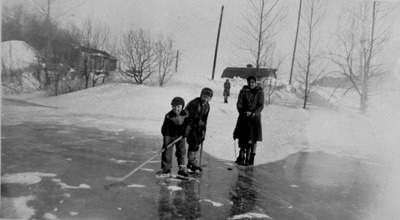 |
| During the 1920s, the South Asian community in Canada began to experience many changes, including financial success and more acceptance for their new community. |
This article is part of community-wide centennial celebrations honoring the building of the National Historic Site Gur Sikh Temple (est. 1911). These centenary celebrations bring to the forefront the efforts of those first Sikh pioneers who helped to build our community. In honor of this pioneering community, the Abbotsford News will be publishing a monthly article to correspond with a decade of Sikh Pioneer and Indo-Canadian history in the Fraser Valley, British Columbia, and Canada.
Increasing Stability:
1921-1930
The decade during the First World War brought increasing stability and security to South Asians in British Columbia. This was due in part because of the three hundred or so wives and children who arrived in Canada.
They enjoyed a significant amount of independence and liberty. South Asian Canadians used their enclosed freedom to unite their domestic, economic and community organizations.
The liveliness of power which was used for political protest in the previous decade was being aimed towards making Canada into their homeland. Although immigration regulations were still affecting the community, it was in a much more muted form than before. In 1920, the Canadian government decided that any South Asian Canadian who did not hold a registering out certificate would lose domicile and would not be allowed to enter Canada. The outcome was the majority of men who went back to India before 1920 were not able to return to Canada.
This decade also brought changes in the household and community life. Sikhs became permanently involved in the wood industries and in rural work camps. Such men were concentrating on lumber and shingle mills. They started selling scrap woods and within a few years were involved in the fuel business.
Many of them were hired by lumber companies already owned by South Asian families and later on, they moved to Vancouver Island. At that time there were only a few community leaders among those and they worked hard towards their community.
Soon the Sikhs started farming in Kamloops, Kelowna and Alberta. It was clear that South Asian entrepreneurial activities were well developing at that time. By then 10 per cent of the Indo Canadian population was self employed.
Though they were working the same as their fellow white Canadians they were still paid less than their white counterparts. Most often, South Asians were saving 10 per cent of their income in order to support their families back home in India. By the end of 1920’s their economic foothold in Canada was considerably more firm than that of many more European immigrant groups. The economic success of South Asians in this decade did lessen many racial restrictions which they faced in the earlier decade.
Men who were without their families generally preferred to live together and were isolated from other Canadians. South Asian households spent the bare minimum on furnishings such as beds and tables. Sikhs in India would likely have lived in extended households but Canadian immigration made it impossible to do so. Thus, wives who were in Canada at the time were looking after the homes and lost the rich social communities they had in India. In order to assimilate into Canadian and Western culture, South Asian Canadians sent their children to Canadian schools.
They also began wearing European clothes. This resulted in a second generation that was the middle man between two cultures.
In other areas of life discrimination decreased gradually at school, and social interaction with other Canadians increased slightly. A small number of Caucasians even started visiting Gurdwara’s during major celebrations. Renting houses also became much easier. Despite these small changes, some businesses including cinemas and high-class restaurants continued to refuse service to South Asians.
These restrictions persisted until the depression. During the 1920s the general image of South Asians in Canada improved considerably which reflected their increasing prosperity and roots in the country.

